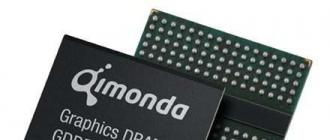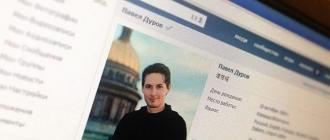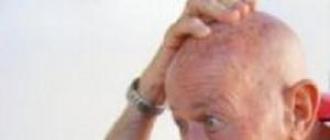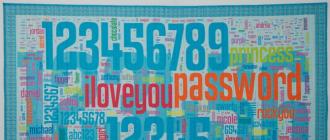The Open With List context menu item is often used to open programs that are being launched. The operating system Windows offers programs to open the corresponding file. Over time, this list can accumulate quite a lot of programs, sometimes not designed to open the file that you want to open.
Quite often there are such situations that for the discovery of the unknown operating system file, in the context menu of the "Open with" Explorer, programs that are not intended to work with the file that you want to open fall into.
You can simply by mistake try to open the file and after that such a program will be added to the list of programs that are designed to open this file. Therefore, it is desirable to delete the entry for an unnecessary program from the context menu.
Attention! Before making changes to the registry of the Windows operating system, it is desirable to create a point, or make a backup. Thus, you will protect your operating system from possible malfunctions or failures that may occur due to erroneous actions with the system registry. After a problem occurs with the operating system, you will need to do a system restore, or restore the registry from the previously created backup registry.
Consider the situation when the list of programs that are designed to view images has got, for example, a text editor for Word. In fact, I myself put this program on this list in order to show how to remove the right program from the list of the context menu "Open with help".
For example, an image file in the format "JPEG". When you open a file using the context menu - "Open with", among the programs intended for this, there is a text editor Microsoft Office Word.
You can select the context menu item "Select program ...". In this case, the program selection window will also contain a program that is not intended to open the file for this extension.
Remove from the "Open with" list in the Registry Editor
An incorrectly selected program will need to be removed from the context menu using the "Registry Editor". In the system registry, only one entry will be deleted, which refers to a specific program.
In the "Registry Editor" you can enter by pressing the keyboard keys "Windows" + "R", and then in the "Run" window you will need to enter the expression "regedit", and after that click on the "OK" button, or press the keyboard on the key «Enter».
In the "Registry Editor" you can get in another way. To do this, go to the Start menu, type "regedit" in the "Search" field, after the search results are displayed, click on the image of the "regedit" program.
After the "User Account Control" window appears, in which you want to accept changes, the "Registry Editor" window appears.

In the "Registry Editor" window, you need to double-click on the listed items (folders) "HKEY_CURRENT_USER" =\u003e "Software" =\u003e "Microsoft" =\u003e "Windows" =\u003e "CurrentVersion" =\u003e "Explorer" =\u003e "File Exts.
Full path of the file extension location:
HKEY_CURRENT_USER \\ Software \\ Microsoft \\ Windows \\ CurrentVersion \\ Explorer \\ FileExts \\ .extension file \\ OpenWithList
In the folder "File Exts" you need to select the file extension, which in the context menu needs to delete the entry about the program with which you can open the file. In our case, this extension is ".jpg". Then, in the "OpenWithList" folder, select the program you want to delete about. On our example this is "WINWORD.EXE".
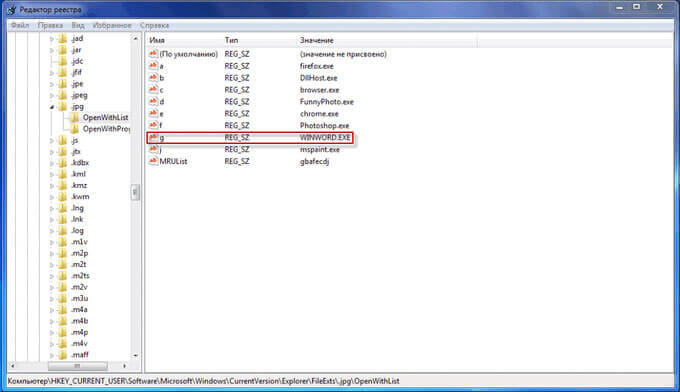
In the window, when the warning appears, click on the "Yes" button.
After these actions, you can close the "Registry Editor". The changes made to the registry took effect without restarting the computer.
In the future, when you open a file using the context menu item "Open with," the entries unnecessary program already will not.

It is not always successful to delete records in this branch of the registry.
Look at two other branches of the registry, in which there may be entries about "unnecessary" programs:
HKEY_CLASSES_ROOT \\ .extension of file \\ OpenWithList HKEY_CLASSES_ROOT \\ SystemFileAssociations \\ .extension of file \\ OpenWithList
If the entry in the context menu remains, check also these registry branches.
Correcting incorrect file associations
For complex cases, when you have incorrectly selected applications to open many types of files, use any of the 7 methods in Windows.
After performing actions to change the association of files, the files will be torn off using the correct applications.
Conclusion
In this way, you can remove unnecessary entries from the "Open with" context menu of programs that have fallen into this list by mistake. The next time you run the program, unnecessary entries will no longer mislead the user.
How to remove a program from the "Open with" list (video)
In this article, we'll look at ways to restore or change the association of files in Windows. A file association is a mapping of a file type to a specific application, with which this file is started to perform the action.
For example, after clicking on the executable "EXE" file, the program will start, after clicking on the file in the "JPEG" format, the file will open in the program, which has a match with this file type.
Sometimes, on the computer there is a violation of the association of files that occur due to incorrect user selection, or as a result of the action of malicious software.
If the selection is incorrect, the user will not be able to open the file of this type on your computer, because an erroneously selected program does not support the opening of files of this type. Moreover, there are quite serious cases when due to improper correspondence of file types, work on the computer is paralyzed.
After clicking the shortcut, the program does not start to open files of this type, instead of it another opens that can not open the desired file, or nothing happens on the computer at all.
Exit this situation: change the association for files of this type. There are two ways to solve the problem: changing the association for a particular file of this type (suitable for normal files), or resetting the association default settings in Windows, using programs or by making changes to the registry.
In the first case, to change the correct association, the change will affect only the file of this type. In the second case, all file associations will be changed by default, the file associations will be the same as on the newly installed Windows.
Change file association using "open with help"
You can change the association of files using the operating system tools. After clicking on the file, select "Open with" from the context menu, and then click "Select another application" in the drop-down list.
The opened window asks the question: "How do you want to open this file?". The Windows operating system will offer you programs that are suitable in its opinion for opening a file of this type. In Windows 7, these windows look a little different.
Please note that the choice of the system is not always correct. Therefore, if you do not know which application should open this type of file, uncheck "Always use this application to open. *** files". Thus, by experience, you will be able to select the appropriate program. Next time, activate this item to automatically open a file of this type.
It is possible that in the proposed list of programs, there will be no suitable option. To find the desired program, click on the "More applications" link. Next, in the Explorer window, find the necessary program on your computer.
File Type Mapping
This way I will show on example Windows 10 (in others versions of Windows similar algorithm of actions). Enter the "Start" menu, then "All applications", "Service", "Default programs". In the "Default Programs" window, click on the link "Mapping file types or protocols with specific programs".

The opened window will ask the question: "How do you want to open this file now?", Select another application.
If the associations of executable files (exe-files), folders, shortcuts (lnk-files), registry files (reg-files), etc. are violated, the methods described above will not help. To restore file associations by default in Windows, you can use special programs.
Recover file association in Kaspersky Cleaner
In the free the program Cleaner there is a section "Restoring the system settings". After opening the tab, select to repair the association of files, look at all the parameters: "Important Problems", "Medium Problems", "Minor Problems", check the required items, and then start restoring the system settings.
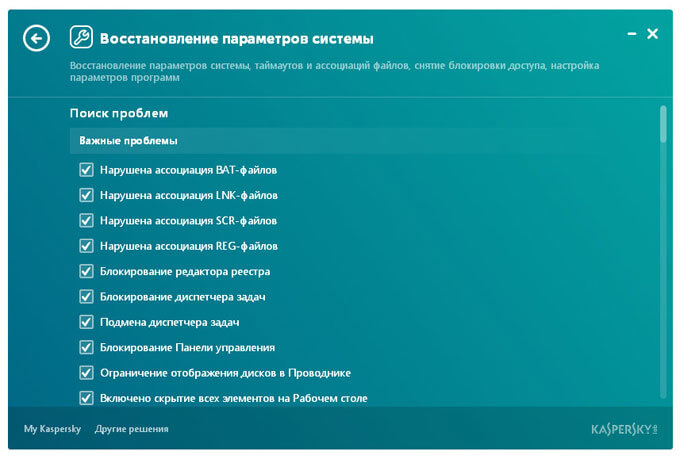
Read more about using Kaspersky Cleaner.
Recover file association in AVZ
AT antivirus utility AVZ can restore the association of certain file types.
Start the AVZ program, go to the "File" menu, select the item "System Restore" in the context menu. In the "Restore system settings" window, check the box "Restore the startup parameters.exe, .com, .pif files", and then click on the button "Perform marked actions".
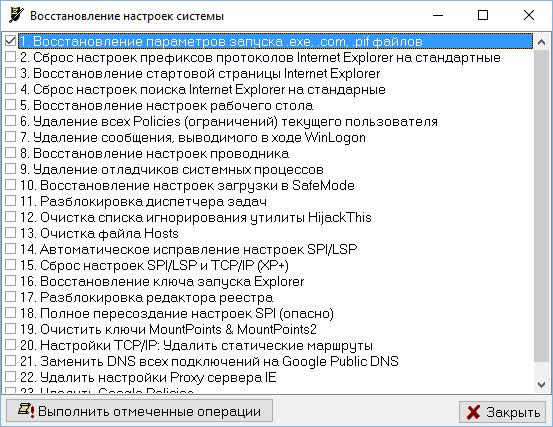
Fixer File Association Fixer
Free File Association Fixer v2 fixes file associations in Windows 10, Windows 8.1, Windows 8, Windows 7 in 32-bit and 64-bit systems. Download the program archive to the computer, and then unpack the archive. Run the File Association Fixer application from a file of the appropriate operating system level installed on the computer.
After starting the program File Association Fixer, in the main window click on the link "Fix Files". After that, the "Select the Association to Fix" window will open. Select the desired file extensions to restore the default settings, and then click on the "Fix Selected" button.

Other free programs: Open With (in Russian), Unassociate File Types, change or restore file associations in Windows 7 (since then the programs have not been updated).
Restoring an association in Windows using registry files
For restoration in Windows file associations by default, you can use ready-made registry files. After running the .reg file and executing the action, the common file associations will be fixed.
To start the registry files, use the following procedure:
- Unzip the ZIP archive.
- Select the desired registry file.
- Run the registry file as administrator (double-click the file with the left mouse button, or right-click on the context menu "Merge").
- Restart the computer.
Recovering Windows 7 File Association
Download the ZIP archive on your computer. In the archive you will find two folders: in one folder one registry file to restore all file associations in Windows 7, in another folder are separate registry files to restore individual associations.
download recovery association windows 7
Recovering the Windows 8 and Windows 8.1 file association
After downloading and unpacking the ZIP archive, in the folder you will find separate registry files for fixing the file association in Windows 8.
download recovery association windows 8
Recover Windows File Association 10
Download and unzip the ZIP archive. Run separate folders from the folder to restore the default association in Windows 10.
download recovery association windows 10
Recover file association in Windows 10
If in the operating room the Windows system 10 disrupted the association of files, then using the system tool, you can easily fix file associations to default values.
Go to the Start menu, select Options, then go to the System window, click on the Default Applications section, and then select the Reset to Microsoft default values setting.
To reset the association of file associations, click on the "Reset" button.
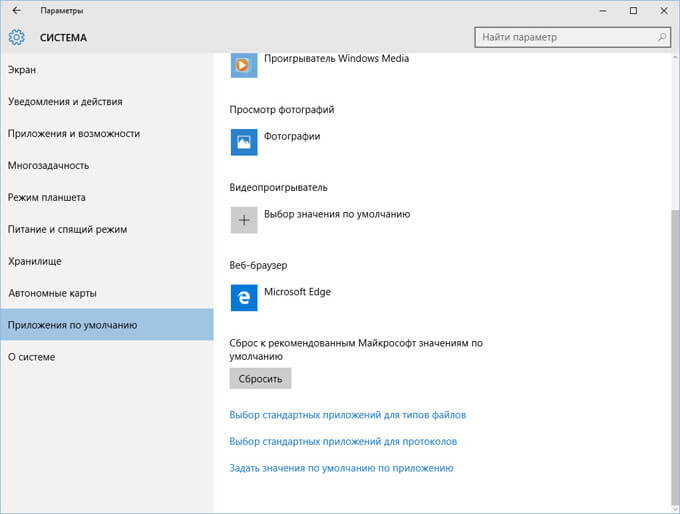
In this section, you can also choose other options: "Select standard applications for file types", "Select standard applications for protocols", "Set default values by application".
Conclusion
Through different ways you can restore or change file associations in the Windows operating system. If file associations are violated, or incorrectly selected, in Windows, you can restore the file associations by default, or change associations by selecting the appropriate application.
Sometimes it happens like this: we install some cool program, and then, damn it, it turns out that some files are now opened by her, although a completely different program opened before. Say, we installed a program like Cowon JetAudio, and now only it opens mp3 files, although it used to open my favorite WinAmp. How to get everything back in place?
Of course, this can be done directly in the parameters of the recently installed program. And you can use the settings that we are kindly offered.
The thing is that many sassy programs during the installation take control of files with a certain extension. Typically, during installation, the program prompts you to select the files that will be associated with it. But many, without looking, quickly clicked the mouse, they all agreed, and then they grab hold of the head. You have to be more careful.
Here, for example, the installation menu KMPlayer. As you can see, the program by default is associated with all video files, so after its installation it will be using KMPlayer that all video files will be opened. Well, if it's planned, and if on the contrary, and this opportunity did not give you nafik?
Fortunately, all this mess with the default programs is very easy to change in Windows 7. We click on the button Start and then on the link .
![]()

A list of installed programs is displayed. Now you can click on any of them and choose in the right panel one of two options: Use this program by default or .
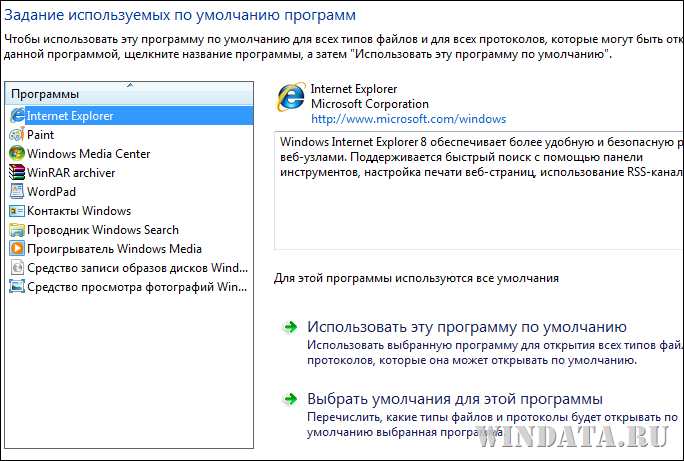
In the first case, the program will by default open all files with which it is associated initially. If we need to specify these files separately, click on the link Select defaults for this program. In our case, let's choose the Paint program and see what it associates with.
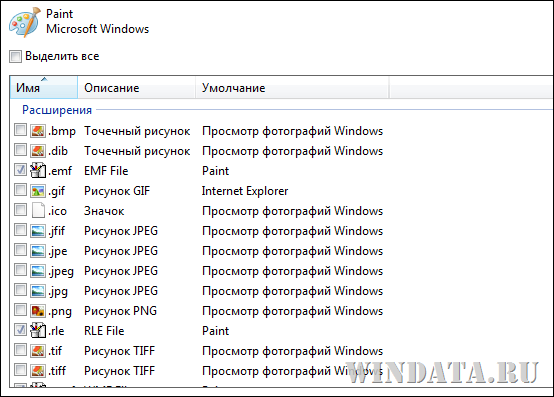
Well, nothing surprising, solid image files. Check the boxes next to the files that you want to open with Paint.
Now back to the menu , shown earlier (the 3rd figure above). Click on it on the long link Mapping file types or protocols to specific programs. A no less long menu will open, in which absolutely all the extensions known to Windows at the moment will be listed. Suppose we need to change the program that will open the file with the TXT extension.

We find this line, click once to see who is responsible for the opening of TXT. Yeah, WordPad. Well it's a stump - I want to use Notepad ++ instead. Double click on the selected line or once on the button Modify the program.
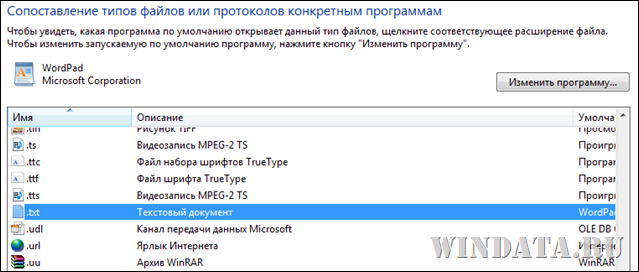
A new window opens in which you want to select a program from the list of recommended ones, or click on the button Overview and specify the desired option. Since Notepad ++ blunt Windows did not see, it is necessary to specify manually.
Where is my Notepad ++ installed, and ??


Here, select the desired one and click on the button OK. Now it's Notepad ++ that will open the TXT files.
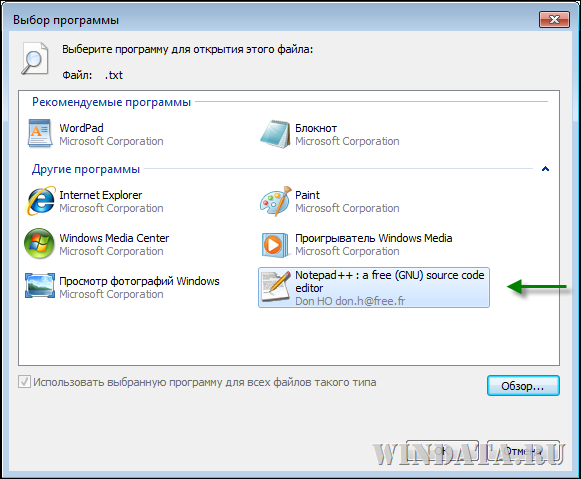
Let's go back in the window . There click on the link Configuring autorun options. A new long list opens, where you can choose whether you want to use AutoPlay for different media, whether it's a disc with movies, music, blank discs, etc. By default, autorun is enabled for absolutely everything.
Since standard features are provided for playing popular types of video, audio, text and some other files in the Windows system, it is the regular programs of the system that are initially installed by default to open the supported file types when double clicking on these files. But as you install into the system third-party programs such a layout will change. In the process of its installation third-party software It often intercepts the default programs role for supported file types. And such software, accordingly, arbitrarily introduces the settings in the file association - the binding of specific programs to specific file types for their discovery by double-clicking. However, there are also some programs that, during the installation process, offer the user to manually configure the file association - for example, select not all file types, but only some. And even at all to refuse attachment of files to the installed program.
Opening a movie in the window of a new media player or a link in a new browser window that unwittingly and unobtrusively established in the appendage to another, usually free program - is not the biggest problem. More precisely, not a problem at all, because this is a natural consequence of the interception of the latter installed program their file types. Where it will be more difficult to do things when after unsuccessful experiments with windows settings or as a result of malicious software penetration, associations will fail system files. Failure of associations of executive.exe files of programs and.lnk-files of shortcuts will make their launch impossible. So, instead of running the desired program, we can get some other program running. Or maybe this: Windows will think that another program is needed to run one program. Naturally, the system will not find this, and it will have nothing more to offer than searching for a match on the Internet or in a Windows store. Equally problematic will be the failure of the associations of system files. Msi, .bat, .cpl, which will make it impossible to uninstall programs installed on the system, open folders or sections of the control panel, and other Windows functions.
Such problems are solved by changing programs by default and restoring default file associations. We'll discuss all of this in more detail below.
1. Configuring the default programs in Explorer
Return your favorite browser, text or graphics editor, media player, other program, so that they are associated with the supported files, you can windows Explorer. On the file of the desired type, make a click with the right mouse button and select "Open with."
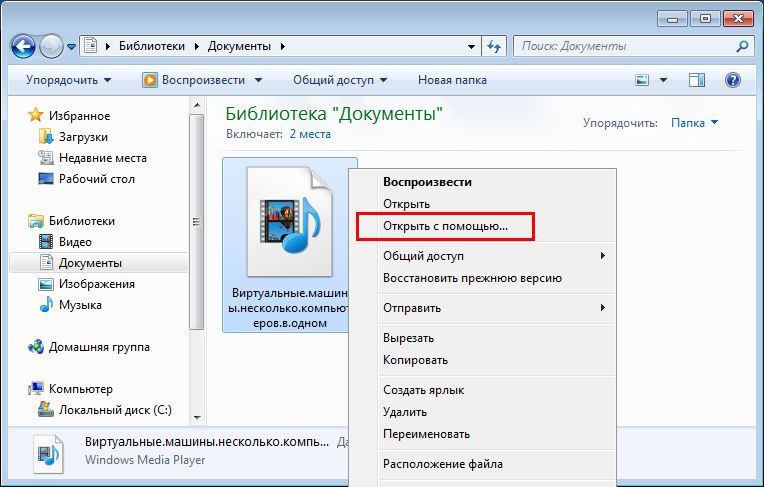
In Windows 7, in the pop-up window, click the browse button.
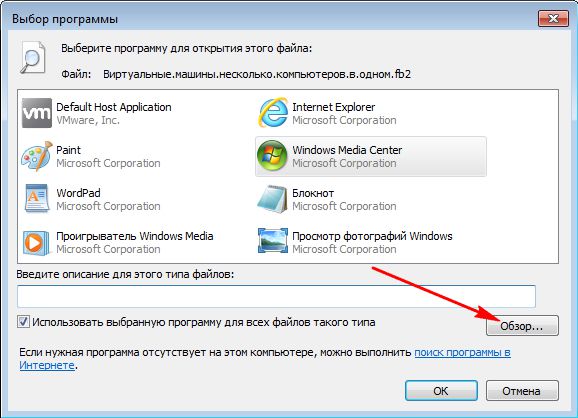
And specify the executable file, finding it on the C drive among the installed programs or in the storage location in the case of portable programs.

We check that a check mark has been ticked for using this program for all files of this type. Click "Ok".

In Windows 8.1 and 10, when you select the "Open with" command, we see the same thing, but in a different design. If in the proposed list of programs is not necessary, open the list by clicking "More applications" (or "More").

Click the option to search for another application.
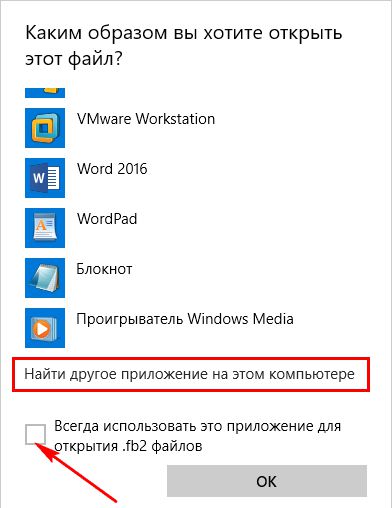 And in the Explorer window we specify the path to the executable file. In order for the selected program to permanently open this type of files, check "Always use this application ...".
And in the Explorer window we specify the path to the executable file. In order for the selected program to permanently open this type of files, check "Always use this application ...".
You can also assign the default program for a particular file type in the properties of a separately selected file. Call on file context menu and click on "Properties".
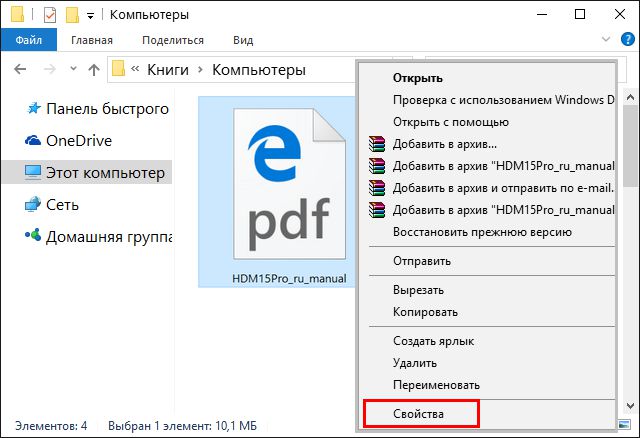
In the column "Application" click "Change".

And indicate the desired program - a modern application, installed in the system program or portable program.
Context menu on files is the only way to install portable software as the default programs. But for the programs installed in the system, there is also a toolkit in the Windows control panel.
2. Setting the default programs in the control panel
Let's go to the system control panel. Quick access to it is in the Start menu of Windows 7
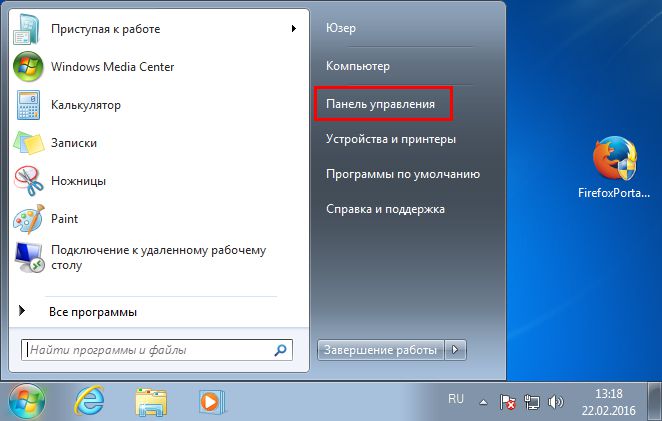
and after clicking + X in Windows 8.1 and 10.
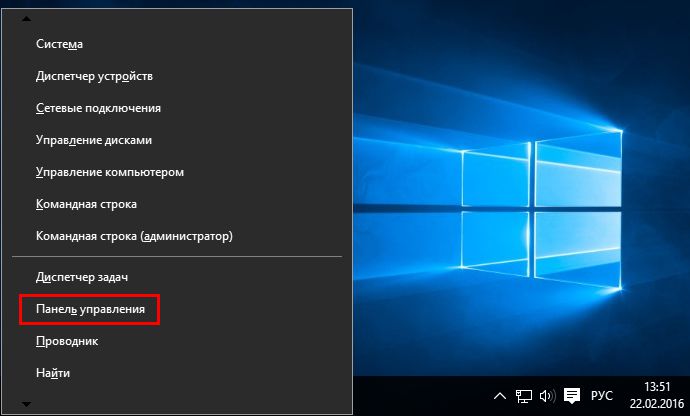
In all versions of Windows, the path and functions will be the same. In the control panel window, select the "Programs" section.
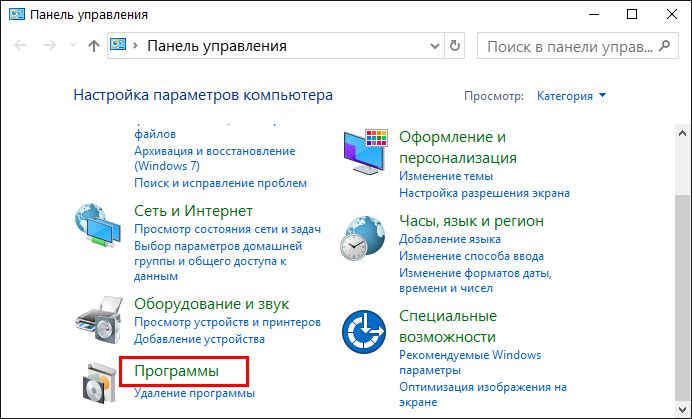
And then in the subsection "Default Programs" click "Set the default programs."

We will see a list of installed programs and modern / universal applications in the case of Windows 8.1 and 10. By selecting a program on the left in the right part of the window, you can set it as the default program. And this program will continue to open all supported files by double clicking on them.

For programs and list applications, you can not assign all file types, but only some.

In the opened list of file types, tick off those that do not want the program to play by default and click "Save".
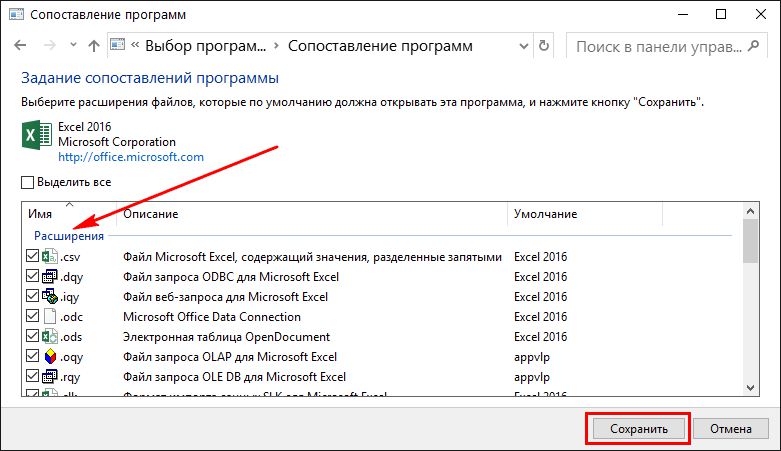
By the same principle, you can configure the default opening programs for each individual file type. Returning to the window of the "Default Programs" control panel, we click another item - "Assigning a program to open files of this type".

Now in the list we will see not the programs, but, on the contrary, the types of files in alphabetical order. Selecting the desired one from the formats and clicking the button "Change the program", thus, in fact, we assign a program for this type of files, which will open them by default.

In Windows 8.1 and 10, after the list of file types, the application launch protocols, Chrome applications, individual mail functions or Skype functions will be placed, etc. Comparison of these protocols with their applications is something that should not be experimented with for the sake of idle interest. After all, as a rule, these protocols are sharpened for specific functions of the system and programs.

3. Modern program settings by default for Windows 8.1 and 10
You can configure desktop programs and modern applications by default for each individual file type in Windows 8.1, either in the control panel or in the standard "Options" application. The essence of these methods is the same, but the interface is different. Press the + Q key and enter the "default" query in the search field. In the search results, select "Default application settings".

AT modern interface program settings by default, file types and protocols will be presented separately.

To customize the program by default for a particular file type, click the plus button or the icon of an existing program and specify the desired application or executable file for the desired program.
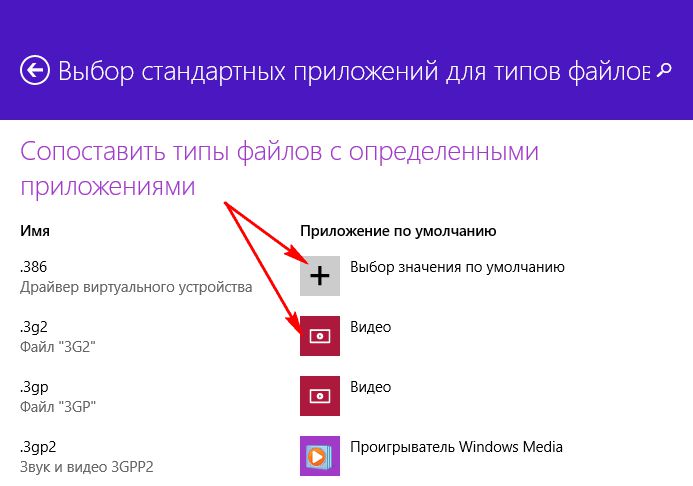
The same format of the program settings by default is also present in Windows 10. But it is called, like the control panel section, "Default Programs".
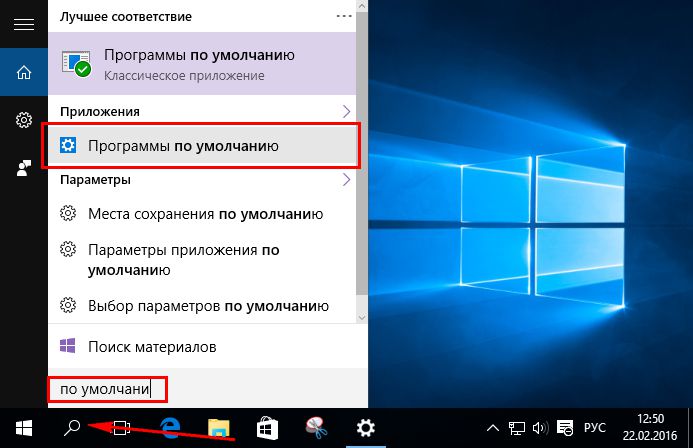
In the appendage to the ability to configure programs by default, Windows 10 also provides the ability to reset file associations to default ones, as they were when installing the system.
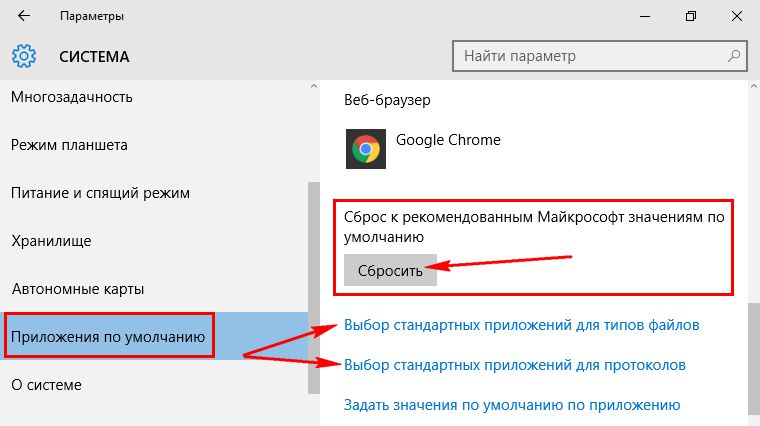
4. Restoring default file associations
The above methods will help in case of association associations of documents, media and other user files fail. However, if you have a problem with the system files, in particular, the types .exe and.lnk mentioned above, here you need more serious intervention with editing the system registry. But we will not edit it manually, but we will follow a simpler path and resort to importing ready-made .reg files - service files intended for making changes in windows Registry. Specifically designed for restoring file associations to default settings.reg files are downloaded on the Internet.
4.1. For Windows 7
For Windows 7, such .reg-files are posted on the site Sevenforums.Com. By clicking the "Download" button, you can download all available .reg files at one time with one folder.

And we can only download individual files.

Loaded.reg-file by double-clicking.
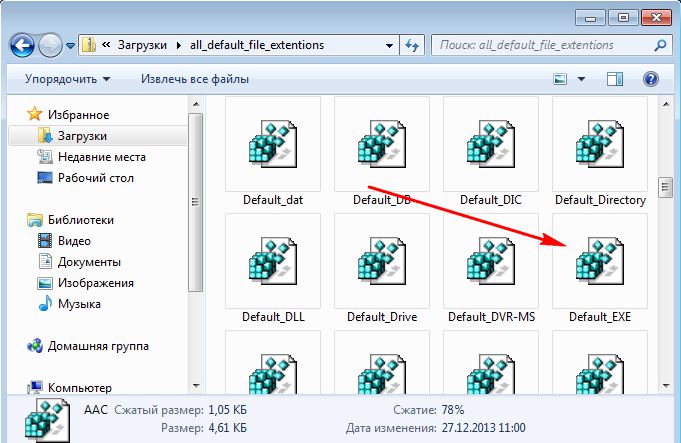
Confirm the launch.
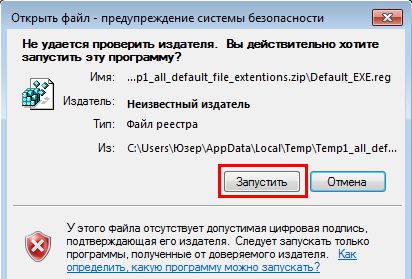
We confirm the continuation of the process.


4.2. For Windows 8.1
By the same principle, we restore the default file associations in Windows 8.1. We download from the Eightforums.Com site either separate.reg-files, for example, to restore the formats.exe- or.lnk, or all.reg-files with one folder.
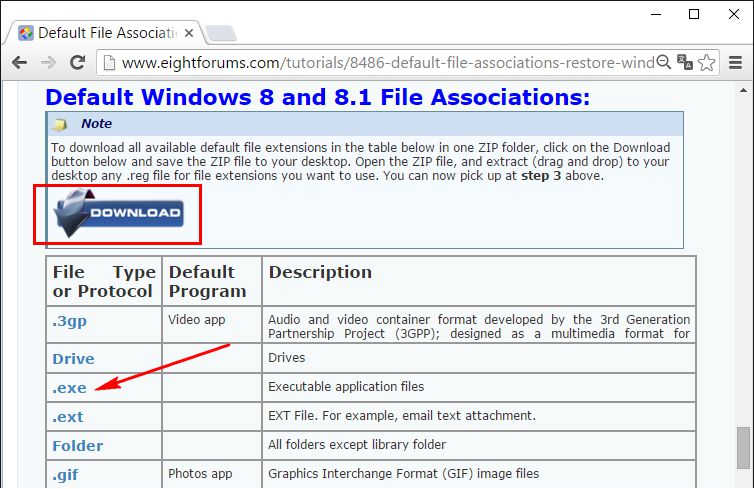
Run the required .reg-file, confirm the action.
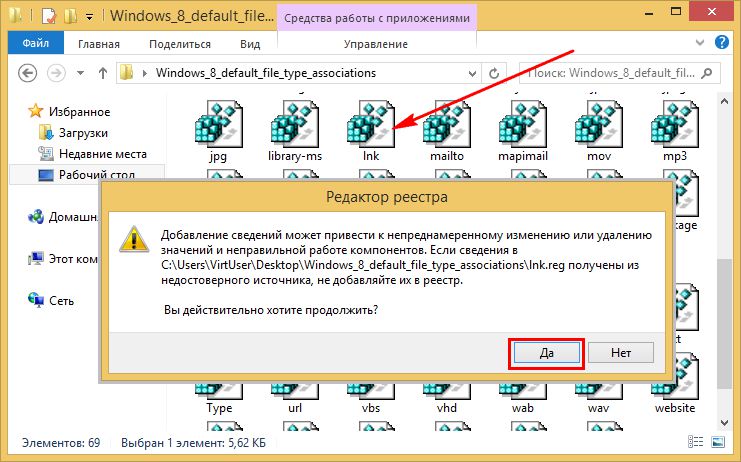

4.3. For Windows 10
Files.reg, which restore the default file associations in Windows 10, can be downloaded from Tenforums.Com.

As in the previous cases, we run the required .reg-file, confirm the action.


5. Program File Association Fixer for the restoration of default file associations
To restore the default file associations as an alternative to the previous method, you can use free program File Association Fixer. This program works with Windows 7, 8.1 and 10 and will help to return to the preset values of the association of system files, in particular, .exe and.lnk. Run the program, go to the tab "Fix Files", put the checkmarks on the desired file types and click "Fix Selected" below.

File Association Fixer provides a way to launch itself even in case the ".exe" file association fails. In this case, to run the program, you must manually change the extension of the program executable from .exe to .com.
Have a great day!

